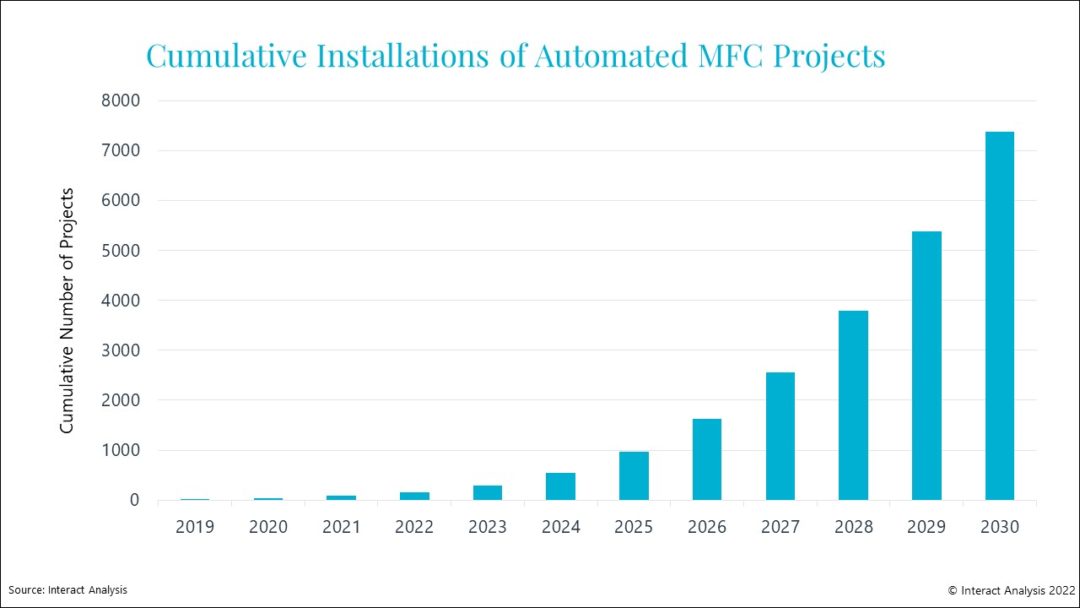Rapid delivery market to drive long-term demand for micro-fulfillment centers
Report predicts 7,300 automated MFCs will be installed by 2030, up from just 86 at the end of 2021.

Micro-fulfillment center (MFCs) installments are expected to skyrocket within the next decade, according to research from London-based Interact Analysis. The firm expects about 7,300 automated MFCs will be installed by 2030, up from just under 86 installed at the end of 2021.
In the short term, growth will come from large incumbent grocery retailers, such as Walmart and Tesco, who are looking to expand same-day delivery services. Longer term, rapid delivery companies such as Getir, Delivery Hero, and GoPuff will drive growth, according to the research.
The research defines automated MFCs as fulfillment centers smaller than 50,000 square feet, or as automation installed in the back of a store. It splits potential customers into two categories: grocery (where more than 50% of revenues is from grocery), and non-grocery retailers.
Non-grocery markets have been slow to adopt MFCs because of a slower uptake in same-day delivery requirements. In the rapid delivery market, MFC installment has lagged as companies focus on network expansion and customer acquisition, a factor that is expected to shift over the next few years due to anticipated market consolidation, which will lead to a stronger focus on profitability per delivery site and investment in automation, the researchers said.
To date, e-grocery platform Takeoff Technologies leads the way in MFC installment, representing 23% of installations as of 2021. Close behind is logistics automation company Swisslog, accounting for 21% of installed projects, followed by material handling systems integrator Dematic, at 14% of installations, according to the research.
Related Articles
Copyright ©2024. All Rights ReservedDesign, CMS, Hosting & Web Development :: ePublishing